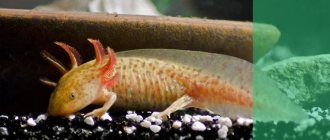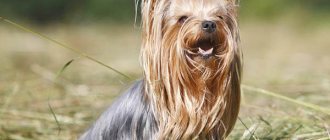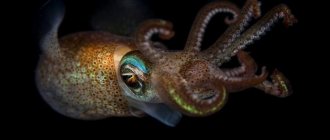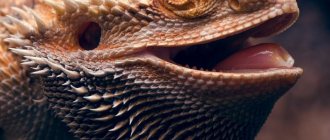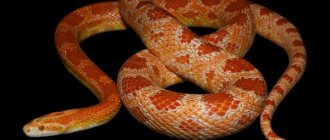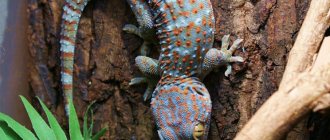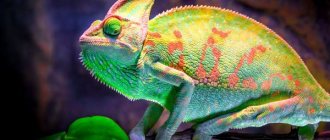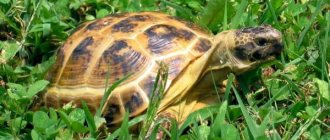It is impossible to express how amazing the world of a home aquarium can be. Ordinary peaceful fish like guppies or swordtails are just the tiny tip of a huge iceberg. One of the rarest, most amazing and funniest aquarium pets is the axolotl, also known as newt or salamander, originally from Mexico. This unusual smiling animal is the larva of the Mexican Ambystoma, a tailed amphibian. It is amazing how the axolotl can simultaneously evoke the most tender feelings and surprise with slight disgust. It is called the water dragon, the Mexican salamander. Keeping an axolotl is not difficult; finding one for sale is much more difficult. The uniqueness of this underwater inhabitant is the ability to reproduce without leaving the larval stage (neoteny, endless youth), as well as amazing tissue regeneration (up to the ability to grow limbs).
Description
How much tenderness and surprise there is in what the Mexican axolotl salamander looks like! Aquarists are primarily interested in the larval form - neoteny. It is a small animal, similar to a lizard or newt, with thin translucent skin. The head is large, the position of the small eyes and mouth creates the feeling that the amphibian is constantly smiling. There are growths on the head that look like curly ears or horns - these are gills. The oval body turns into a powerful tail with a fin, commensurate with the body in length. Instead of pectoral and anal fins, the Ambystoma larva has two pairs of legs with tiny toes.
The body length of the Mexican salamander is 15-20 cm. The weight is 300 grams. Ambystoma in the wild can grow up to 40 cm. Aquarium life affects the size of the amphibian - no more than 25 cm in length.
Neoteny Ambystoma remains a predator, despite the “eternal period of youth.” The axolotl even has teeth. But his skin is so delicate that it is damaged even by environmental influences (sharp snags, stones). What can we say about the struggle for life.
Diseases and their prevention
Important! Do not pick up the axolotl! This may cause burns to appear on its body as the human body temperature is too high for a water dog.
If there is a need to remove a larva from a reservoir, for example, to quarantine it or provide first aid, it is better to use a soft cloth net or pre-cool your hands with ice .
In most cases, illnesses in Ambystoma larvae are a consequence of disturbed living conditions.
The most common problems:
- Intestinal obstruction . It occurs due to the fact that the axolotl swallows particles of soil while feeding. Symptoms: lethargy and complete refusal to eat. Unfortunately, only surgery can help in this case.
- Lesions of cartilage tissue . This is a consequence of a violation of the vitamin-mineral balance. Most likely, the axolotl does not have enough calcium and vitamin D, but changing the diet on your own is unacceptable; it is better to consult a veterinarian. Signs of deficiency development will be apathy and lethargy.
- Ambystoma larva suffers from anorexia . Symptoms include refusal to eat and a bloated body. Therapy is prescribed by a veterinarian.
- It is not uncommon for an axolotl to develop ascites . The cause of the disease is poor quality food and excessive pollution of the reservoir. Therapy is prescribed by a veterinarian.
Varieties of axolotls
This aquatic dinosaur has many forms that vary in appearance. The skin color of a water dragon is different: some individuals are milky white, others are dark, brown, gray. Today there are also forms bred in captivity, distinguished by patterned colors. In nature, it is more beneficial for the aquatic salamander to be dark. The white color is too noticeable, and judging by the description, the axolotl has a lot of enemies.
- Mexican natural - gray-brown or black axolotl, merging with the color of the soil of natural lakes;
- White - the skin of a young individual is milky white; when it gets older, a dark stripe appears on its back. The white axolotl should be distinguished from the albino - it has dark brown eyes, and there is almost no pink or red in its color;
- Albino - their skin is white or golden (lutinous form). The eyes are red, like all albino forms of animals. The water dragon's gills are also red or pink. Unlike white axolotls, these amphibians that survive metamorphosis necessarily remain albinos and do not change skin and eye color;
- Harlequin is an artificially bred form resulting from crossing white and brown axolotls. The result was a light-colored water monster with many dark spots on the skin.
In captivity, you can find aquarium axolotls of various colors: with clear and indistinct spots, stripes, stains, and marks.
Appearance and features
Photo: Home axolotl
Axolotl is the larval form of any Ambystoma. They are divided into two species, since these species are distinguished by the greatest ability for neoteny. The external characteristics of the axolotl make it look like a kind of toy, an animated dinosaur of reduced size. The salamander has a huge head relative to its body. On both sides there are three hair-covered antennas. These are the external gills. They can be either pressed to the body or raised.
Interesting fact: These amphibians have a unique structure of the respiratory system. They have lungs, like internal respiratory organs, and gills, like external ones. This allows them to feel comfortable both on land and in water.
The body is elongated, there are limbs and a tail. The skeleton will be replaced by cartilage tissue. It is especially tender and soft in young individuals. The head part is widened and rounded. A wide, flat mouth creates the feeling of a permanent smile. The oral cavity contains many small and sharp teeth. They perform the function of fixing caught prey. They are not suitable for chewing or separating food. There are small, round, black eyes on the head.
The body of the little newt is streamlined, smooth, elongated and slightly flattened. In the back area there is a longitudinal ridge that acts as a fin. There are also transverse stripes that give the appearance of a ringed body. There are two pairs of limbs. The front ones are four-toed, and the back ones are five-toed. The tail of a water dragon is very long. In total, it forms about five dozen cartilaginous vertebrae with the body. The tail part is highly mobile. This ability allows amphibians to move quickly in water.
The length of the axolotl's body is from 15 to 40 centimeters. The volume of the body is 13-20 centimeters, the weight of one individual does not exceed 350 grams. Sexual dimorphism is not very pronounced. Females are somewhat lighter and smaller than males, and also have a shorter tail. The color of a water dragon can be very diverse: brown, gray, green, and can have all sorts of patterns of various sizes on its body. Also, a salamander can have a light color with various markings on it, or completely white without patterns or markings of a different color.
The uniqueness of the Mexican axolotl: neoteny
The first thing that interests scientists so much about this amphibian is, of course, the ability to remain in the larval stage - neoteny - all its life, and at the same time reproduce and survive. Usually a larva, fry, or cub is a defenseless and vulnerable creature. Nature gave the axolotl a chance to live in a young form without the need to grow up quickly. Why and for what purpose remains a mystery.
Due to the peculiar structure of the thyroid gland, the little monster gets by with virtually no iodine. This lack is reflected only in difficulties with transformation. The axolotl becomes a full-fledged Mexican ambistoma only in certain cases: under the influence of external hormones or when there is a lack of water. If conditions do not require a fundamental change in appearance, neoteny can live for many years without taking on an adult form. The lifespan of a larva is almost no different from how long axolotls that have turned into ambistos live: they can live up to 20 years (in a home aquarium - up to 15). The main thing is suitable conditions (especially in captivity).
Origin story
The axolotl is a neotenic larva from the Ambystomaceae family. Translated, the name means “water monster”, but it is difficult to call an axolotl a monster - the salamander larva has a truly touching and funny appearance.
A feature of the salamander is the ability to reproduce while still a larva - this is the meaning of neoteny of water dragons. This phenomenon is due to the fact that this amphibian lacks the hormone responsible for the development of the body. In other words, the axolotl and the ambystoma are the same animal, at different stages of development.
Regeneration is the dream of humanity
Another unique feature of the pink axolotl is the ability to regrow missing body parts. Nature gave this skill to the larva so that it would not be so vulnerable. Having lost his gills or part of his tail, the smiling dinosaur grows them back in record time. It takes a little longer to grow a new paw. The main condition is that the wound does not get infected. This rarely happens in the clear waters of Mexican lakes. Ironically, aquarium axolotls are much more likely to suffer damage. Instead of quickly restoring the lost body part, they die from blood poisoning.
How to keep an axolotl
In general, keeping an axolotl is not a difficult task. However, these pets cannot be recommended to beginners in the aquarium business. The owner must understand all the responsibility towards these unique animals and know why water parameters are so important.
The main condition is low temperature. This sometimes turns out to be impossible. The aquarium replicates the temperature of the room. It is easy for heat-loving fish to heat the water with a special heater. It is extremely difficult to organize uninterrupted cooling of the tank. Perhaps this is why axolotls rarely live at home. 19-21°C is the temperature range for this amphibian. The warmer the water, the less oxygen it contains, and this has a detrimental effect on the animal.
Arrangement of the aquarium
- Volume – 40 liters of water is enough for one baby 3-4 months old. Mature axolotls usually require 100 liters per pair. By the way, a couple of axolotls is enough to make the life of an aquarist sparkle with new colors;
- It is very important to choose a soil that is comfortable for the little dragon to live in. Axolotls not only swim in the water column, but also “walk” along the bottom. They cling to the stones with their small, dexterous fingers and thus walk, studying the bottom in search of food. Stones that are too small or too sharp are prohibited. Most fish are able to suck and spit out stones that accidentally fall into their mouths along with food. An axolotl may not notice something inedible and swallow it, which often causes digestive problems that even lead to the death of the animal. Sand or pebbles with a fraction of 4-6 mm are suitable;
- Filtration should be of high quality, comparable to the volume of the aquarium, but not create too strong a current. “Water toys” axolotls love clean water and react with diseases to large amounts of nitrates;
- Aeration should also be appropriate to the size of the aquarium. There is no need for intensive aeration; standard pressure is sufficient, but the compressor must be selected separately. A filter compressor is not suitable if its ability to aerate water is too low;
- The decor must be smooth, without sharp corners. Animal skin is too delicate and is easily damaged by dangerous edges. Shelters are needed: pots, holes, grottoes, coconut shells are also suitable;
- Live plants are preferable to artificial ones, including because of the hardness and danger of the latter. Cladophora, echinodorus, cryptocorynes, anubias, and hornwort are ideal. Axolotls love to rest under lush foliage. Plants are also needed for reproduction. Complete the aquarium with Riccia and Pistia, which float on the surface and naturally shade the aquarium;
- Lighting should preferably be dim, as axolotls are blind.
Water parameters
- Temperature 19-21°C
- Hardness 6-16°;
- Acidity 7.0-8.0 pH;
Maintenance and care
- Cleaning the soil with a siphon 2-3 times a month;
- Change a small amount of water weekly (approximately 1/10).
Keeping a Water Dragon
An adult axolotl will be comfortable in an aquarium with a volume of at least 40 liters. 3-4 water dragons will fit perfectly in a 100-liter container. The aquarium is installed in a cool room and should not be exposed to direct sunlight.
There are two things you should not do when keeping axolotls: keep your pets in close quarters and overheat the water. Elevated temperatures are detrimental to them. Under natural conditions, they live in cold mountain lakes, so the water temperature in the aquarium should be about 18-20° C.
Important: temperatures above 24° C can lead to illness and death of the amphibian. If the apartment is too warm, you will need a cooling system.
Since aquatic dragons are very sensitive to the purity of water and its oxygen saturation, filtration is necessary in the aquarium and aeration is desirable. Partial water changes should be carried out at least once a week.
Axolotls require hard water to keep them. Soft, and especially distilled, is absolutely not suitable for them. Ordinary tap water is pre-settled for several days or purified using special conditioners (for example, Avera). The pH value should be in the range from 6.5 to 8.
An amphibian's home needs soil - without it, the axolotl will not feel very comfortable. As such, it is better to use pebbles no smaller than 1.5-2 cm in size. The salamander does not particularly need live plants, but you can decorate the aquarium with artificial ones.
Axolotls love dark places, so the aquarium is equipped with all kinds of shelters. You can place driftwood, large pebbles, pots or coconuts in your ward’s home. But remember: Mexican salamanders have very delicate skin, so there should not be any pointed objects in the aquarium.
Axolotl nutrition
Mexican newts are predators, so the basis of their diet is protein food. Feeding should be regular, but in small portions. The rules for using live food are also relevant for axolotls: after the animals have eaten, the remaining food must be removed. Uneaten food quickly becomes poison, poisoning the water (the content of nitrogen compounds, those same nitrates and nitrites, increases).
Foods that are suitable for Neotenia Ambystoma:
- Sinking food for predatory fish - granules or tablets;
- Mussels, shrimp;
- Bloodworm;
- Pollock fillet.
You can feed both fresh and frozen food. A good addition-delicacy would be live small fish.
Some species of predatory fish are given beef heart. Mammalian protein is contraindicated due to the peculiarities of the digestive system. Only pieces of underwater inhabitants!
Photo
CULLED FROG: CONTENT, CARE, BREEDING, COMPATIBILITY, PHOTO.
AQUARIUM FROGS: CONTENT, CARE, COMPATIBILITY, BREEDING, DESCRIPTION.
AQUARIUM NEWTS: CARE, CONTENTS, DESCRIPTION, REPRODUCE, PHOTO, VIDEO.
Compatibility with other fish
Ideally, ambystoma larvae are kept in a separate monospecies aquarium. It is very difficult to choose neighbors because:
- Most fish require higher temperatures than the axolotl;
- Small and slow fish will be eaten;
- Large predators will quickly deal with the soft, defenseless neighbor, even if he is called an aquatic dinosaur;
- Other amphibians are incompatible with the axolotl in nutrition;
- Reptiles (turtles, snakes) will most likely interfere with axolotls, and axolotls will interfere with them.
Some aquarists who had experience keeping ambyst larvae claim that the amphibians lived with them in almost a three-liter jar, easily cohabited with cichlids, and so on. Situations and the degree of adaptability to conditions are different for different representatives. But among competent aquarists, the most important principle is known: in the aquarium it is necessary to create conditions that maximally replicate the natural habitat of the inhabitants. This applies to everything: not only water parameters and bottom design, but also neighbors. Fish, amphibians, and reptiles should live in comfortable conditions, and not experience constant fear or thirst for hunting. Therefore, it is better not to populate an aquarium with axolotls even with goldfish, which are sometimes recommended.
Axolotl behavior
The Mexican salamander is primarily a nocturnal animal. But, adapting to living conditions, it is active during the day. Her favorite activities are to leisurely swim throughout the entire thickness of the water, feel the walls and soil with her paws, or doze under the leaves of plants. Sometimes they hang right in the water column, in the current of the filter, as if meditating. The long tail plays an important role in maintaining balance and direction of movement. The animal also eats without haste, but with great enthusiasm.
If an axolotl sees live prey, it does not immediately rush after it, but waits for the most opportune moment (usually dusk or night).
Amphibians mostly live peacefully among themselves. But if the aquarium is too cramped or overcrowded, intraspecific aggression is possible.
Axolotl: keeping at home with other fish
Experts recommend keeping the Mexican dragon separately from its relatives and other fish, but if you decide to breed lizards in the same aquarium, do not forget about a number of rules:
- individuals must be the same size;
- Water dragons of different ages cannot be kept in the same aquarium;
- Personal space for each animal requires at least 50 liters per adult, otherwise the animals will tear off each other’s limbs.
Adult axolotls can eat small larvae and animals. It is necessary to remember this when breeding salamanders, immediately isolating babies from the adult population.
You should also be careful with other fish and, if possible, exclude any proximity. Other predatory fish can prey on the axolotl's gills and damage them, and the nocturnal inhabitants themselves can attack other sleeping fish at night in order to feast on them.
The only possible neighbors for the dragon are goldfish. They feel good in cool water, and with proper care and organized nutrition they will not attack the salamander.
Sexual differences and reproduction
By the end of the first year of life, “aquatic dinosaurs” are able to continue their race. How to determine sex: Females have a more rounded body, while males have characteristic swellings around the cloaca. When these features become noticeable, axolotls are ready to mate.
It is not difficult to organize breeding of axolotls at home. It happens that the process starts without any stimulation, but if a constant temperature is usually maintained in the aquarium, it should be changed regularly within the parameters acceptable for the animal:
- Reduce the length of daylight hours and bring the temperature closer to the upper limit of 21°C;
- Then increase the length of daylight hours and reduce the temperature to the lower permissible level of 19°C;
- Repeat regularly.
Reproduction easily occurs in a community aquarium, if there is no one else in it besides axolotls. If smiling amphibians have neighbors, it is better to transplant the pair into a spawning tank. The male releases spermatophores, which the female collects using the cloaca. This way the eggs are fertilized. As a result of a simple “spawning”, it ends up on the leaves of plants. It is recommended to transfer these plants to a separate aquarium or return the pair home, leaving the eggs without parents.
Incubation takes a long time: 2-3 weeks. Depends on the water temperature. Amphibians do not have the concept of “fry”; larvae up to 1 cm in size hatch from the eggs. The first week is spent settling into a new environment; there is no need to feed them: the babies feed from the yolk sac. Then you can start feeding with the usual starter food for fish fry: daphnia, brine shrimp, and live food mush.
It is interesting to watch the development of newborn axolotls. It takes three weeks for the hind limbs to begin to appear. By this period, the baby has already grown to 2.5 cm. By the end of the first month, they are already amphibians of almost typical shape, up to 5 cm in size. At 3 months, the axolotl is considered to have formed neoteny.
What and how to feed axolotls?
In the wild, axolotls feed on snails, worms, crustaceans, small fish and small amphibians. In captivity, they can be fed a variety of shrimp, small strips of beef or liver, earthworms, bloodworms, chimney sweep worms, other frozen fish foods, and commercial fish pellets.
Do not feed any worms or fish you catch, as they may carry parasites. Typically, there is no need for vitamin or mineral supplements.
Consult your veterinarian regarding the amount of food to offer, as well as how often to feed your axolotl, as this depends on age and size. Typically, many adults feed two to three times a week.
One of the best feeding methods is to hold the food with round tongs in a container near the animal. You can also simply throw the food into the water as close to the axolotl as possible.
If your axolotl doesn't want to eat much during the day, try feeding him in the evening when he is usually more active. Remove any leftover food from the aquarium daily to keep the water clean.
How do adult Ambystoms live?
It may seem surprising, but white axolotls after metamorphosis can become a completely unexpected color ambistomes:
- Black;
- Tiger ambystoma is a large amphibian (up to 27 cm) of olive color with stripes and spots similar to the color of a tiger;
- Marble – black with a silver marble pattern on the body. They do not grow large - up to a maximum of 12 cm;
- Yellow-spotted – black with yellow spots, medium size.
Basically, all Ambystoma live in forests, where it is damp and cool, they catch insects, mollusks, and are active at night.
An axolotl, if kept well in an aquarium and given proper care, may never become an adult. If you need to turn a larva into a lizard, it is better to seek help from a specialist. He will carry out a series of hormonal injections, and metamorphosis will occur. is strongly recommended not to do this yourself. More than half of domestic axolotls die precisely because of inept hormonal therapy.
Coloring
The choice of color forms in axolotls is impressive. In nature, they are typically dark brown with gray or black spots. But there are also light color forms, with various dark spots on the body.
The most popular among fans are albinos, which come in two colors - white and gold. The white one is an albino with red eyes, and the golden axolotl is similar to him, only there are golden spots on the body.
In fact, there are a lot of different options, and new ones are constantly appearing. For example, scientists recently bred a gene-modified axolotl with green fluorescent protein. Such pigments glow fluorescently under special lamps.
Species status
These endemic animals live in nature only in Mexico, and then in extremely small numbers. In home aquariums they are distributed almost all over the world. The species is heading towards extinction due to natural conditions. The good news is that axolotls have taken root in aquariums, which means they are not in danger of becoming extinct.
For comparison, statistics: there are less than 1000 of these amphibians left in the wild. And in captivity there are more than 400 thousand. The decline in numbers is associated with human influence and changes in climate and biotope. Unfortunately, we must admit that axolotls are too fragile creatures to adapt to global changes in the environment.
Lifestyle and habitat
Sea dogs are phlegmatic. They lead a measured, calm lifestyle and prefer a wait-and-see strategy when hunting - the best option is when the food itself floats to the axolotl.
Revival occurs during the breeding season.
Axolotls are listed in the Red Book as an endangered species. Their natural habitat was lakes Xochimilco and Cholco in Mexico , but with the onset of urban development, the natural range of water dogs declined sharply.

